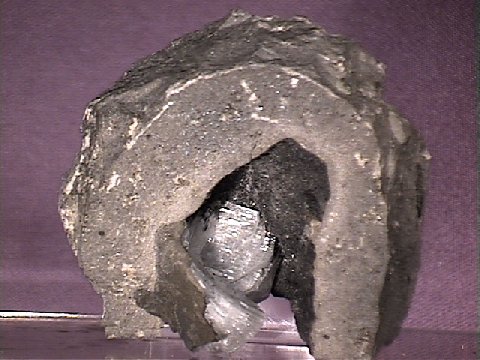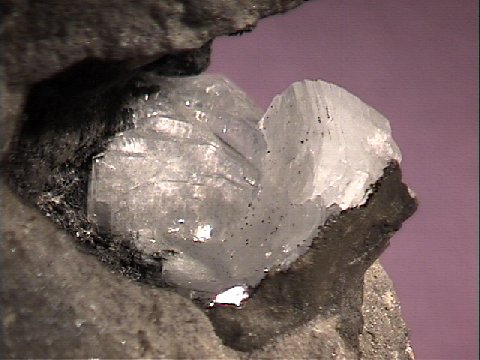 THE MINERAL CLINOPTILOLITE
THE MINERAL CLINOPTILOLITE
- Chemistry: (Na, K, Ca)2 - 3Al3(Al, Si)2Si13O36-12H2O, Hydrated Sodium Potassium Calcium Aluminum Silicate
- Class: Silicates
- Subclass: Tectosilicates
- Group: Zeolites
- Zeolite Family: Heulandite
- Uses: As a chemical filter, chemical absorber, water purifier and as mineral specimens.
Specimens
Clinoptilolite forms as a devitrification product (the conversion of glass to crystalline material) of volcanic glass in tuffs. Tuffs are consolidated pyroclastic rocks. The devitrification occurs when the glass is in contact with saline waters. Clinoptilolite is also found in the vesicles of volcanic rocks such as basalts, rhyolites and andesites. It forms as an alteration of phillipsite in deep-sea sediments and with borate minerals in playa lakes. Clinoptilolite, which means "oblique feather stone" in Greek, received its name because it was thought to be the monoclinic (or obliquely inclined) phase of the mineral ptilolite, as in "oblique ptilolite". But ptilolite was later found to be the earlier named mineral mordenite; consequently ptilolite is no longer in use.
Clinoptilolite is very closely related to heulandite and is currently being considered for disuse itself as it may just be a variety of huelandite. It differs from heulandite significantly only in its enrichment in potassium and slightly more silica and it is argued that a separate mineral is not needed. The name clinoptilolite is widely recognized and used among zeolite industries, mineral collectors and mineralogists. For now at least, clinoptilolite is recognized as a legitimate, distinct mineral.
The structure of clinoptilolite is the same as heulandite and is sheet-like. Although still a true tectosilicate where every oxygen is connected to either a silicon or an aluminum ion (at a ratio of [Al + Si]/O = 1/2), there still is a sheet-like structural organization. The sheets are connected to each other by a few bonds that are relatively widely separated from each other. The sheets contain open rings of alternating eight and ten sides. These rings stack together from sheet to sheet to form channels throughout the crystal structure. The size of these channels controls the size of the molecules or ions that can pass through them and therefore a zeolite like clinoptilolite can act as a chemical sieve, allowing some ions to pass through while blocking others. A zeolite can be thought of in terms of a house, where the structure of the house (the doors, windows, walls and roof) is the zeolite while the furniture and people are the water and ammonia molecules and ions that can pass in and out of the structure. Clinoptilolite's sheet-like structure produces the prominent pinacoid faces, the perfect cleavage and the unique luster on those faces.
PHYSICAL CHARACTERISTICS:
- Color is colorless, white, pink, yellow, reddish and pale brown.
- Luster is vitreous to pearly on the most prominent pinacoid face and on cleavage surfaces.
- Transparency: Crystals are transparent to translucent.
- Crystal System is monoclinic; 2/m
- Crystal Habits include blocky or tabular crystals with good monoclinic crystal form. More tabular and proportioned than heulandite. Also commonly found in acicular (needle thin) crystal sprays.
- Cleavage is perfect in one direction parallel to the prominent pinacoid face.
- Fracture is uneven.
- Hardness is 3.5 - 4, maybe softer on cleavage surfaces.
- Specific Gravity is approximately 2.2 (very light)
- Streak is white.
- Other Characteristics: Can absorb a significant amount of water after drying and will retain its structure even if heated to almost the temperature of melted glass.
- Associated Minerals are
calcite,
aragonite,
thenardite,
hectorite , quartz, apophyllite, opal, clays, pyrite, halite, mordenite, heulandite, chabazite, analcime, erionite,ferrierite , harmotome,dachiardite , phillipsite and several borate minerals - Notable Occurrences include the widespread tuffaceous volcanic rocks of Arizona; the type locality of Hoodoo Mountains and the Yucca Mountains of Nevada; Altoona, Washington; Agate Beach and Madres, Oregon and several sites in California, USA. Also found at Styria, Austria; Bulgaria; British Columbia, Canada; Ortenberg Quarry, Germany; Alpe di Siusi, Italy; Kuruma Pass, Japan; McQueens Valley and Moeraki, New Zealand and Chinchwad, India.
- Best Field Indicators are crystal habit, density, locality, water absorption, heat tolerance and associations.



